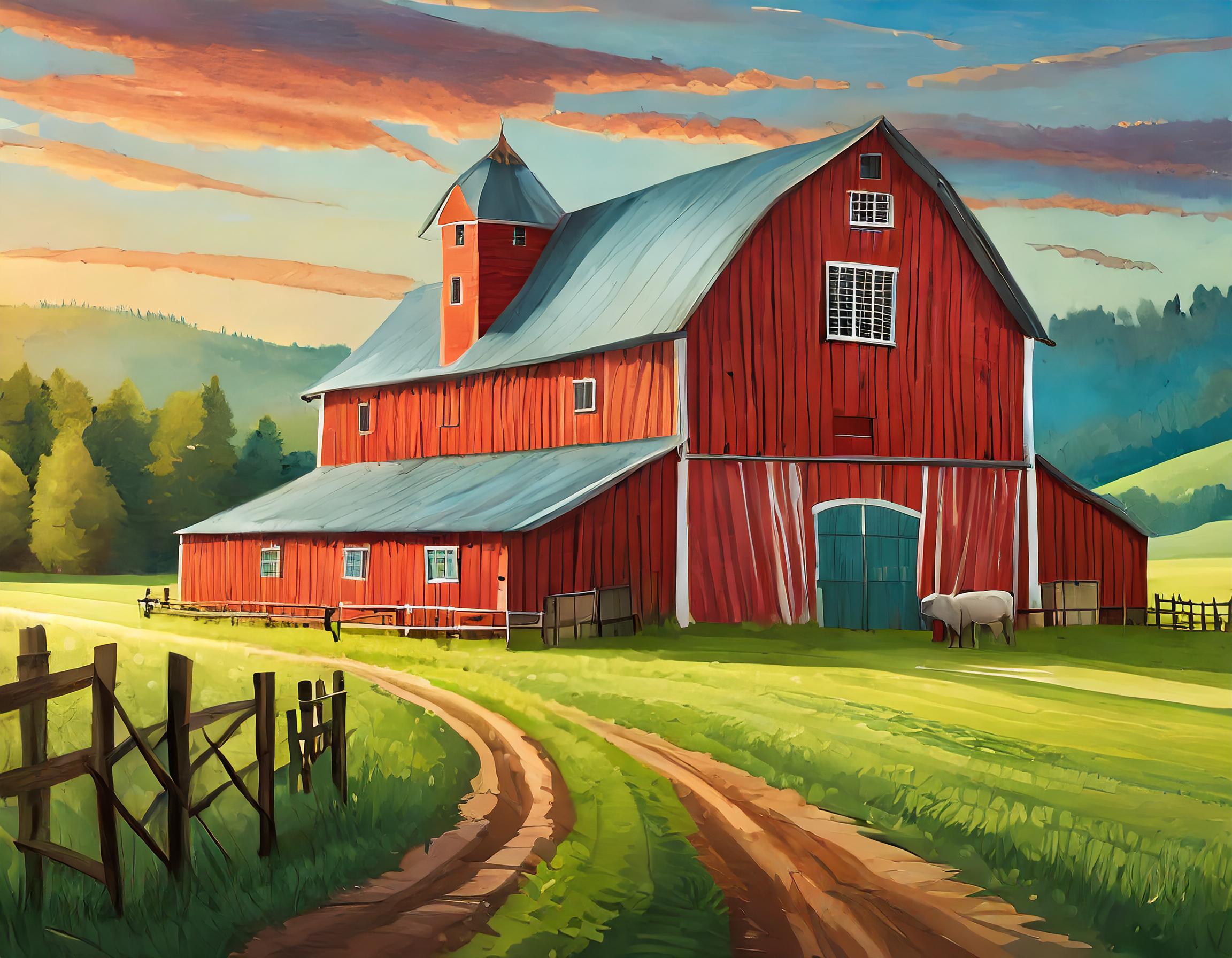Barns, towering structures that dot the rural landscape, have long been an iconic symbol of farm life. Among the various colors that adorn these structures, red stands out as one of the most prevalent and iconic choices. But why exactly did farmers choose to paint their barns red? The answer to this question is a blend of history, practicality, and tradition.
One of the prevailing theories behind the red color of barns dates back to early American history. In the 1700s and 1800s, farmers often faced limited options when it came to painting their barns. During this time, many farmers turned to a mixture of milk, lime, and rust (or ferrous oxide) to protect their barns from the elements. This mixture not only provided a protective coating but also offered a distinct reddish hue when applied. The rust, derived from iron oxide, gave the paint its characteristic red color.
Beyond the availability of materials, there were practical reasons for choosing red paint. Red pigment was favored for its affordability and durability. Farmers found that the iron oxide in the paint acted as a natural preservative, helping to seal the wood and protect it from decay and rot. Additionally, red paint was believed to help absorb sunlight during the colder months, thus aiding in keeping the barn warmer.
Moreover, there is a cultural and traditional aspect associated with painting barns red. As more and more farmers adopted this practice, it became ingrained in agricultural communities as a symbol of prosperity and heritage. The sight of a red barn against the backdrop of green fields became an enduring image of rural life in America.
Interestingly, while red became the dominant color for barns in many regions of the United States, there were variations across different areas and cultures. In parts of Scandinavia, for example, barns were often painted with a red pigment derived from copper, giving them a distinctively different hue compared to their American counterparts.
In modern times, the tradition of painting barns red has persisted, albeit with a wider array of color choices available. Many farmers still opt for red paint out of respect for tradition, while others choose different colors to match their preferences or to distinguish their barns from neighboring properties.
The choice to paint barns red was influenced by a combination of practicality, availability of materials, and cultural tradition. Over time, the iconic red barn has become synonymous with rural life, serving as a reminder of the rich agricultural heritage that continues to shape communities across the country.


 Facebook
Facebook
 X
X
 Pinterest
Pinterest
 Copy Link
Copy Link






